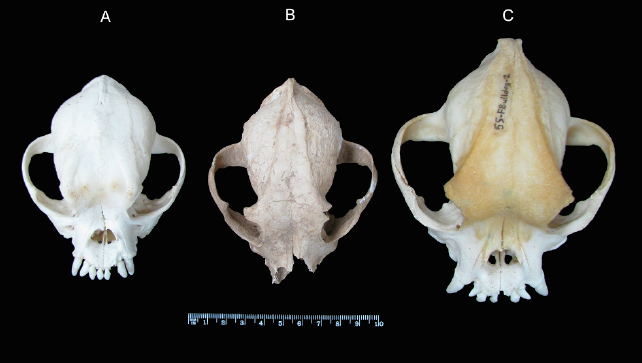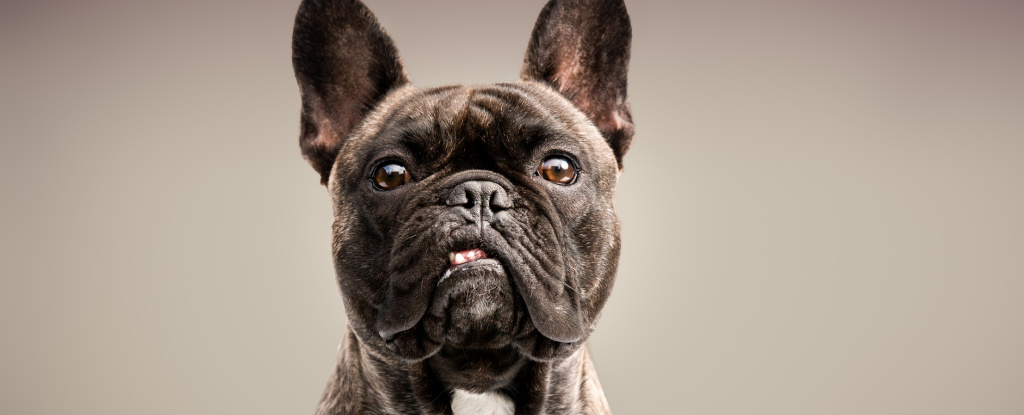Products You May Like
With their baby-face aesthetics and a certain personable charm, flat-faced dogs are cherished companions around the world. It’s a love that dates back to Roman times, a new study suggests.
The skull and jawbone of a dog with a decidedly squashed snout was unearthed in 2007 in the ruins of Tralleis (now Aydin in modern-day Türkiye), thousands of years after it was buried in a tiled tomb at the foot of its human keeper.
Based on an analysis of its remains, the pet-like Tralleis dog was found to resemble a modern-day French Bulldog. Its bones also bore no signs of disease or excessive tooth wear which suggests it was not a working dog but rather led a luxurious life at a time when Romans were just beginning to breed its kind.
“Maybe it was the best friend and companion of the deceased, who probably included in his last will the wish of a common burial,” writes the team of researchers led by Vedat Onar, a osteoarcheologist at Istanbul University-Cerrahpaşa.

Measurements and structure of the fractured skull and jawbone were compared to that of 54 modern dog breeds and used to deduce the dog’s likely age to be a tad older than 18 months. The comparison also suggested the dog was probably male, and was most similar to French Bulldogs and Pekingese dogs; the latter being the prized, silken lapdogs of Chinese imperial families. So it seems the Romans may have wanted a type of companion dog of their own.
Radiocarbon dating estimates suggest the dog lived more than 2,000 years ago, sometime between 169 BCE and 8 CE, in the early stages of the Roman Empire.
The find was lucky in more ways than one. After the fragile skeleton was excavated in 2007, it was stashed away in a warehouse but only the skull and jawbone were found when archaeologists went looking again in 2021.
It’s only the second known specimen of a flat-faced (or brachycephalic) dog that dates back to the Roman age; the other one was excavated in the ruins of Pompeii.
Brachycephalic dogs such as pugs have become wildly popular in recent years despite increasing concerns about their health problems which extend far beyond labored breathing, the result of their shortened snouts and extreme body shapes. Allergies, corneal ulcers, eye diseases, and skin fold infections are also common, research shows.
Depictions of these snub-nosed canines, however, have never been found in classical inscriptions, reliefs, or mosaics from the Roman era. Two other classes of dogs, those that are mesocephalic, with broader snouts and larger nasal cavities giving them great sniffing abilities, and dolichocephalic, with extremely long skulls and long slender noses which improves their long range vision, are instead the typical style of Roman canine.
Although the brachycephalic skulls found to date are fractured and number only two, the researchers suggest the emergence of flat-faced dogs during early Roman times likely reflects a practice of dog breeding that started in the Roman period and later became more common.
Amongst domesticated animals, dogs show a much larger variety of skull shapes and sizes than other species that have been selectively bred – making it a bit easier to trace those changes through history.
“This dog skull found in Tralleis, which bears important traces of the Roman period, can be seen as a phenomenon of artificial selection which was largely introduced by humans and achieved by reinforcing desired traits,” Onar and colleagues write in their published paper.
Historical records indicate that Romans were likely the first civilization to systematically breed dogs, documenting the resulting appearance, qualities, and behaviors of their canine companions. They classified dogs into three functional groups: farm dogs, shepherd dogs, and hunting dogs. Small-sized ‘toy’ dogs were perhaps something of a novelty.
“The fact that particularly noble Greeks and Romans preferred noble dog breeds, and were able to pay large sums for them, inspired new efforts in dog breeding,” the researchers add.
While financial records and fossils can reveal much about early dog breeding, we can only speculate that Romans held the same giddy affection for snub-nosed dogs as many dog owners do today.
The research has been published in the Journal of Archaeological Science: Reports.
